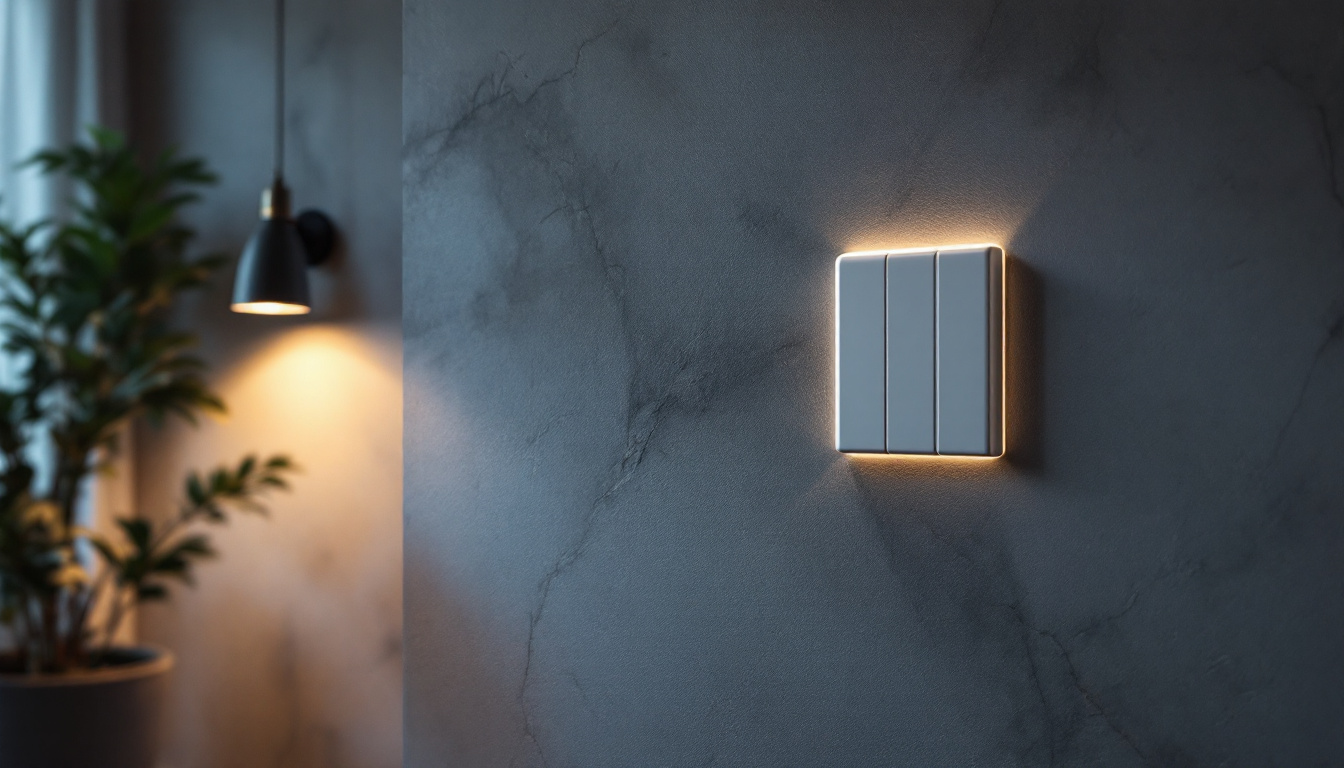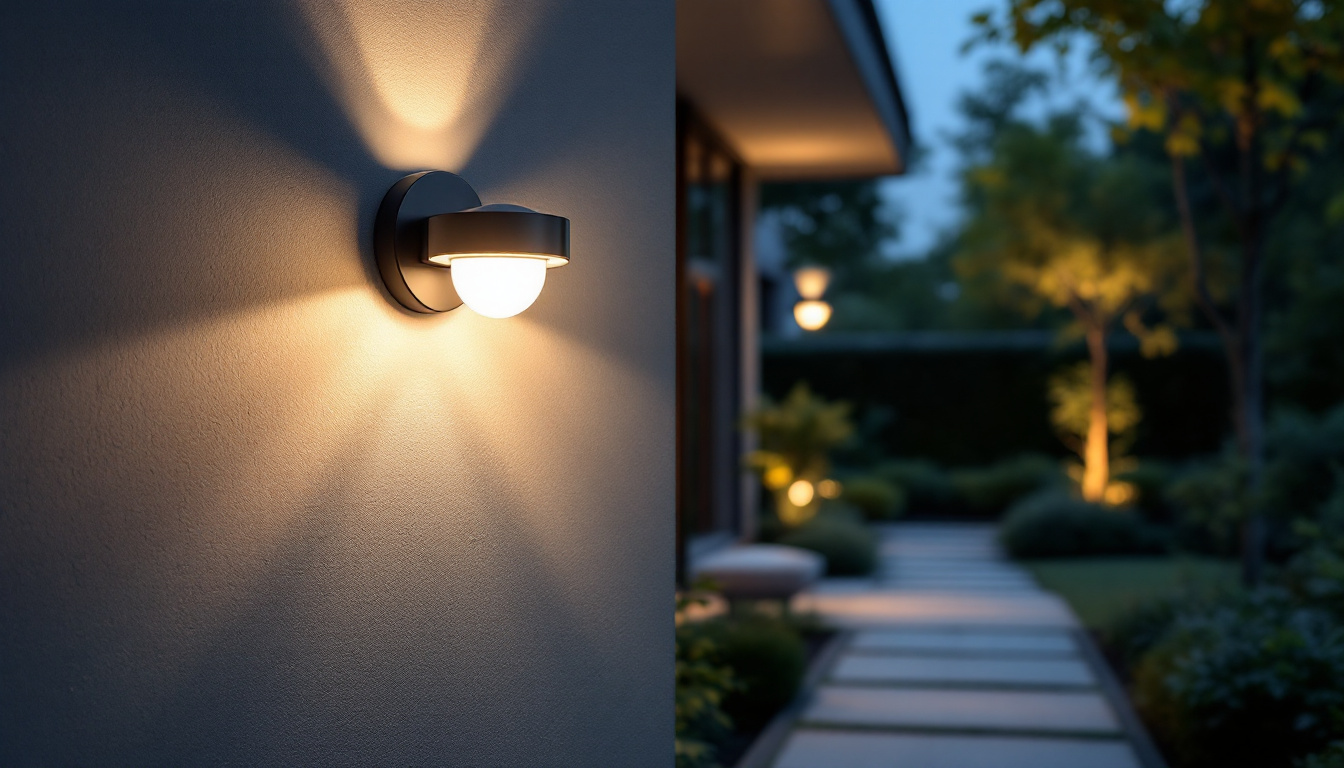
The evolution of lighting technology has transformed the way spaces are illuminated, making them more functional, efficient, and aesthetically pleasing. Among the various components that contribute to modern lighting solutions, the 3-way switch stands out as a pivotal element. This article delves into the significance of 3-way switches in contemporary lighting systems, exploring their functionality, installation, and the benefits they offer to both contractors and homeowners.
A 3-way switch is a type of electrical switch that allows control of a single light fixture from two different locations. This functionality is particularly useful in larger spaces such as hallways, staircases, and open-concept areas, where multiple entry points necessitate convenient access to lighting controls. The versatility of 3-way switches not only enhances the aesthetic appeal of a space but also contributes to energy efficiency by allowing users to turn off lights from multiple locations, thereby reducing unnecessary energy consumption.
The basic operation of a 3-way switch involves two switches that work in tandem to control a single light source. When one switch is flipped, it changes the path of electricity, either allowing or interrupting the flow to the light fixture. This means that either switch can turn the light on or off, providing flexibility and convenience for users. The design of 3-way switches also includes a mechanism that prevents the light from being turned on simultaneously from both locations, ensuring a seamless user experience.
In contrast to a standard single-pole switch, which controls a light from one location, the 3-way switch enhances accessibility and usability, making it an essential component in modern lighting design. Additionally, the installation of 3-way switches can significantly improve safety in areas like staircases, where having multiple control points can help prevent accidents by ensuring that lights are always accessible when needed.
Wiring a 3-way switch may seem complex, but understanding its configuration is crucial for effective installation. Typically, a 3-way switch setup involves two switches and a light fixture, with specific wiring connections that must be adhered to for proper functionality. The common wiring setup includes a traveler wire, a load wire, and a line wire, each serving distinct purposes in the circuit. The traveler wires connect the two switches, allowing them to communicate with each other, while the load wire connects to the light fixture itself.
Contractors should be familiar with the various wiring schemes, such as the “switch leg” method or the “power to the switch” method, as these can affect the overall installation process. Proper wiring ensures that the switches operate smoothly and safely, minimizing the risk of electrical issues. Furthermore, understanding the nuances of 3-way switch wiring can empower homeowners to undertake DIY projects, fostering a sense of accomplishment and enhancing their knowledge of home electrical systems. Safety precautions, such as turning off the power at the circuit breaker before beginning any electrical work, are essential to prevent accidents and ensure a successful installation.
Incorporating 3-way switches into lighting designs offers numerous advantages that can enhance both functionality and user experience. Understanding these benefits can help contractors make informed decisions when planning lighting installations.
One of the primary benefits of 3-way switches is the convenience they provide. In larger spaces, having the ability to control lighting from multiple points eliminates the need to walk across a room or hallway to reach a switch. This is especially beneficial in homes with children or elderly individuals who may have mobility challenges.
Additionally, 3-way switches can be strategically placed near entry points, making it easier for occupants to manage lighting as they enter or exit a space. This thoughtful consideration of user experience can significantly enhance the overall functionality of a lighting system.
Energy efficiency is a critical consideration in modern lighting solutions, and 3-way switches contribute to this goal. By allowing users to easily turn off lights from multiple locations, these switches help reduce energy waste. In spaces where lights are frequently left on, such as hallways or staircases, the ability to control lighting from different points can lead to significant energy savings.
Moreover, when paired with energy-efficient lighting options, such as LED bulbs, 3-way switches can further optimize energy consumption, resulting in lower utility bills and a reduced environmental footprint.
3-way switches also offer design flexibility, allowing contractors to create lighting layouts that meet the specific needs of a space. Whether it’s a residential home, commercial building, or public facility, the ability to control lighting from multiple locations can enhance the overall aesthetic and functionality of the environment.
Incorporating 3-way switches into a lighting design can also facilitate the use of dimmers, which further enhances the versatility of lighting solutions. This combination allows for tailored lighting experiences that can adapt to various activities and moods, from bright task lighting to soft ambient illumination.
For contractors, understanding the intricacies of installing 3-way switches is essential for delivering high-quality lighting solutions. There are several key considerations to keep in mind during the installation process.
Adhering to local electrical codes is paramount when installing 3-way switches. These codes govern the safe and proper installation of electrical systems, ensuring that all components function correctly and safely. Contractors should familiarize themselves with the relevant codes in their area, as these can vary significantly.
Ensuring compliance not only protects the safety of the occupants but also helps avoid potential legal issues or costly rework in the future. Proper documentation and inspections may be required to verify compliance, so contractors should be prepared to navigate these requirements.
When selecting 3-way switches for a project, contractors should consider factors such as compatibility, durability, and design. There are various types of 3-way switches available, including traditional toggle switches, rocker switches, and smart switches that can be controlled via mobile apps or voice commands.
Smart switches, in particular, are gaining popularity in modern lighting solutions, as they offer additional features such as scheduling, remote access, and integration with home automation systems. Contractors should assess the specific needs of their clients to recommend the most suitable options.
After installation, thorough testing of the 3-way switches is crucial to ensure they function as intended. This includes checking the operation of each switch, verifying that the light fixture responds correctly, and ensuring there are no flickering or intermittent issues.
In the event of any problems, contractors should be equipped with troubleshooting skills to diagnose and resolve issues efficiently. Common problems may include faulty wiring, defective switches, or compatibility issues with the light fixture. Being proactive in addressing these concerns can enhance client satisfaction and reinforce the contractor’s reputation for quality work.
The rise of smart home technology has introduced new possibilities for integrating 3-way switches into modern lighting solutions. Smart 3-way switches offer enhanced control and flexibility, allowing users to manage their lighting systems more effectively.
Many smart 3-way switches are designed to work seamlessly with popular home automation platforms, enabling users to control their lighting through voice commands, mobile applications, or automated schedules. This compatibility enhances the user experience, making it easier to manage lighting in various scenarios.
Contractors should be knowledgeable about the different smart home ecosystems available and how to integrate 3-way switches into these systems. This may involve configuring network settings, ensuring proper connectivity, and educating clients on how to utilize the technology effectively.
One of the standout features of smart 3-way switches is the ability to control lighting remotely. Homeowners can turn lights on or off from anywhere using their smartphones, providing added convenience and security. This feature is particularly beneficial for those who travel frequently or want to simulate occupancy when away from home.
Additionally, automation capabilities allow users to set schedules for their lighting, ensuring that lights are on when needed and off when not in use. This not only enhances energy efficiency but also contributes to a more comfortable living environment.
Integrating 3-way switches with smart technology can significantly enhance the overall user experience. Homeowners can customize their lighting settings to suit their preferences, creating different moods for various activities—whether it’s a cozy movie night or a bright workspace for productivity.
Furthermore, the ability to control lighting through voice commands or mobile apps adds a layer of convenience that modern homeowners have come to expect. Contractors who offer smart integration as part of their services can differentiate themselves in a competitive market and provide added value to their clients.
The role of 3-way switches in modern lighting solutions cannot be overstated. Their ability to enhance convenience, improve energy efficiency, and offer design flexibility makes them an essential component for contractors working on diverse projects. As technology continues to evolve, integrating 3-way switches with smart home systems will further enhance their functionality and user experience.
For contractors, understanding the intricacies of 3-way switch installation, code compliance, and smart technology integration is crucial for delivering high-quality lighting solutions. By staying informed and adapting to the latest trends, contractors can ensure that they meet the needs of their clients while providing exceptional service.
In a world where lighting plays a vital role in shaping environments, the 3-way switch stands as a testament to the importance of thoughtful design and innovative solutions. Embracing this technology not only enhances the functionality of spaces but also contributes to the overall satisfaction of homeowners and occupants alike.
Ready to elevate your lighting solutions with the convenience and efficiency of 3-way switches? At LumenWholesale, we provide contractors with the highest quality, spec-grade lighting products at unbeatable wholesale prices. Say goodbye to inflated markups and hello to a vast selection of reliable, high-performance lighting that meets the strictest industry standards. Plus, with free shipping on bulk orders, you can stock up on premium lighting without any hidden fees. Don’t compromise on quality or value—choose LumenWholesale for the best in modern lighting solutions. Wholesale Lighting at the Best Value is just a click away.

Discover the secrets to maximizing efficiency with ceiling light strips.

Discover essential tips for lighting contractors on front porch hanging lights, boosting curb appeal and safety.

Discover essential insights and practical tips for lighting contractors on selecting and installing exterior motion lights.

Discover how ceiling fans can revolutionize garage spaces, offering lighting contractors a unique edge in business.